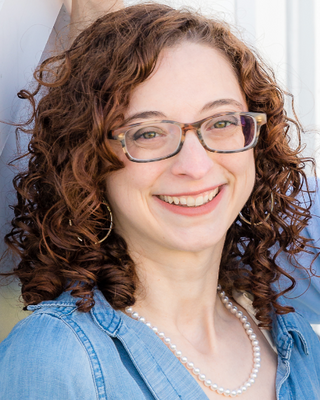Therapists in Jefferson County, IN
There are no results for therapists in Jefferson County
Check out therapists located nearby or offering teletherapy in Indiana below.Online Therapists

Rachel Ackerman
Counselor, LMHC-A, LPC, ATR-BC, PMH-C
Verified Verified
Greenwood, IN 46142
My approach as a board certified art therapist is to use creative and sensory exploration to navigate deeper feelings when words are difficult to articulate. Art therapy is ageless; any age can benefit with no artistic skill required! Some challenges I help children process through include: anxiety, trauma, ADHD, school related issues, and divorce. I also offer the option of traditional talk therapy to work through parenting, pregnancy, anxiety, depression, and life changes. Parents talk through discipline, bonding, anger, and building trust with their kids. Tele-therapy is also available for Indiana and Illinois residents.
My approach as a board certified art therapist is to use creative and sensory exploration to navigate deeper feelings when words are difficult to articulate. Art therapy is ageless; any age can benefit with no artistic skill required! Some challenges I help children process through include: anxiety, trauma, ADHD, school related issues, and divorce. I also offer the option of traditional talk therapy to work through parenting, pregnancy, anxiety, depression, and life changes. Parents talk through discipline, bonding, anger, and building trust with their kids. Tele-therapy is also available for Indiana and Illinois residents.
See more therapy options for Jefferson County
Expressive Arts Therapists
What happens in expressive arts therapy?
In an expressive arts therapy session, the therapist will provide the space and materials necessary to encourage the client to express themselves creatively. These can include art supplies, musical instruments, a journal, a camera, and more. The therapist offers careful guidance throughout the creative process, often noticing and talking about psychological issues as they arise. Many clients also benefit from the mind-body connection—the physical act of making art can help them feel more grounded and present.
How long does expressive arts therapy take?
An expressive arts therapy session will typically last between 50 minutes and an hour. Group sessions may run longer. Sometimes, a client might only need one or two sessions of expressive arts therapy in conjunction with talk therapy to resolve a psychological issue. Others might find a fixed number of sessions over the course of either weeks or months to be beneficial. The duration depends on the client and their individual needs and goals for therapy.
How does expressive arts therapy help children?
Creativity is an important part of normal child development. Expressive arts therapy proves a safe outlet for child clients to learn to identify their emotions and express them in healthy ways. In expressive arts therapy, children can build their self-esteem, discover more about their personality and strengths, and feel a sense of normalcy in an otherwise chaotic world. This therapeutic approach can be particularly helpful for children with developmental disabilities, autism, ADHD, speech impairments, and other conditions.
What are the limitations of expressive arts therapy?
Sometimes individuals have physical limitations that can affect their ability to express themselves artistically in certain mediums. For example, someone with hearing problems might find it difficult to make music. Sickness and mobility issues can make some types of art physically inaccessible (e.g., sculpting, dancing, etc.). Sometimes, clients are overly skeptical and have trouble letting go and engaging with the creative process. Individuals who require a higher level of care may be better served with other types of therapy.

